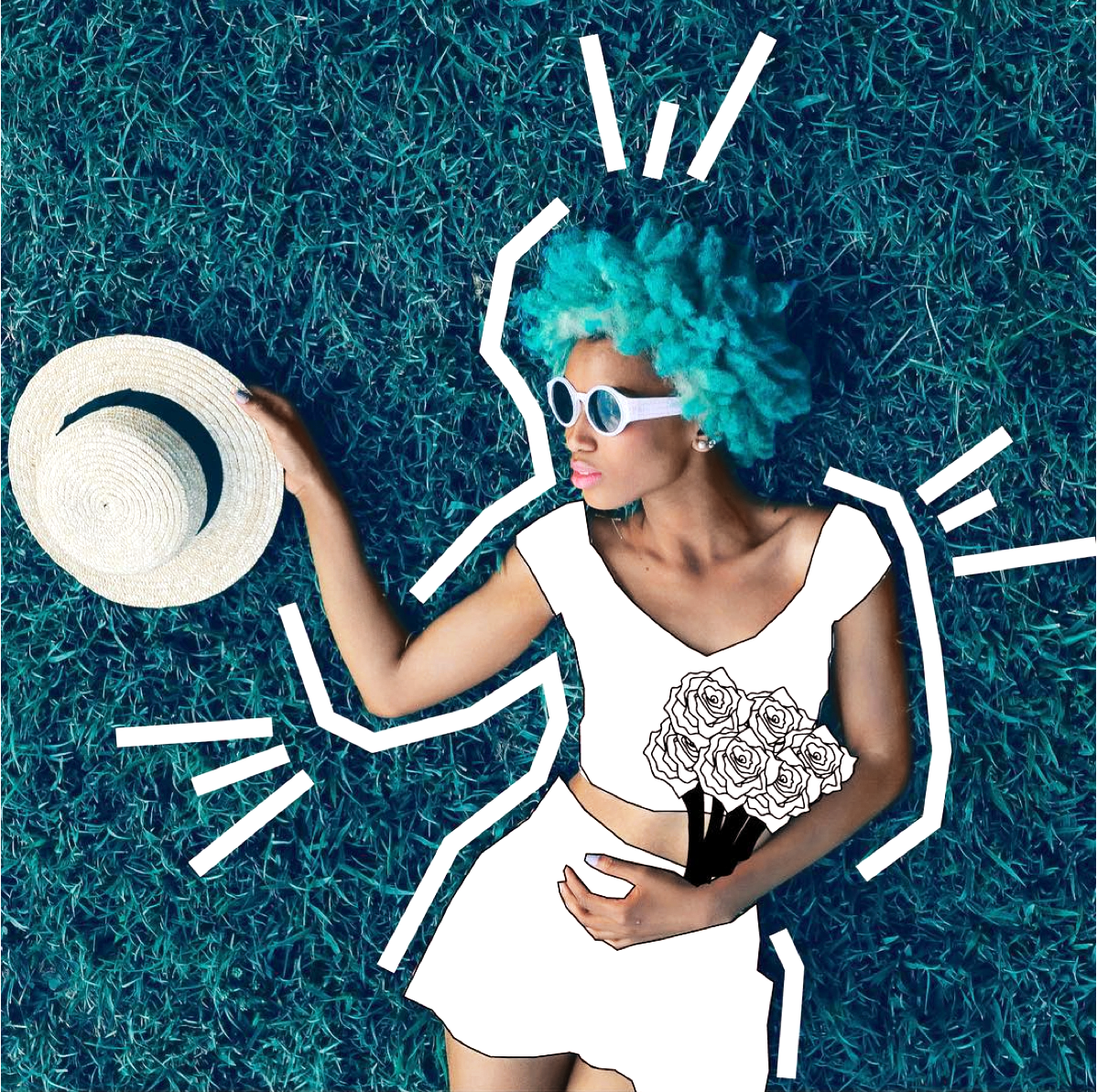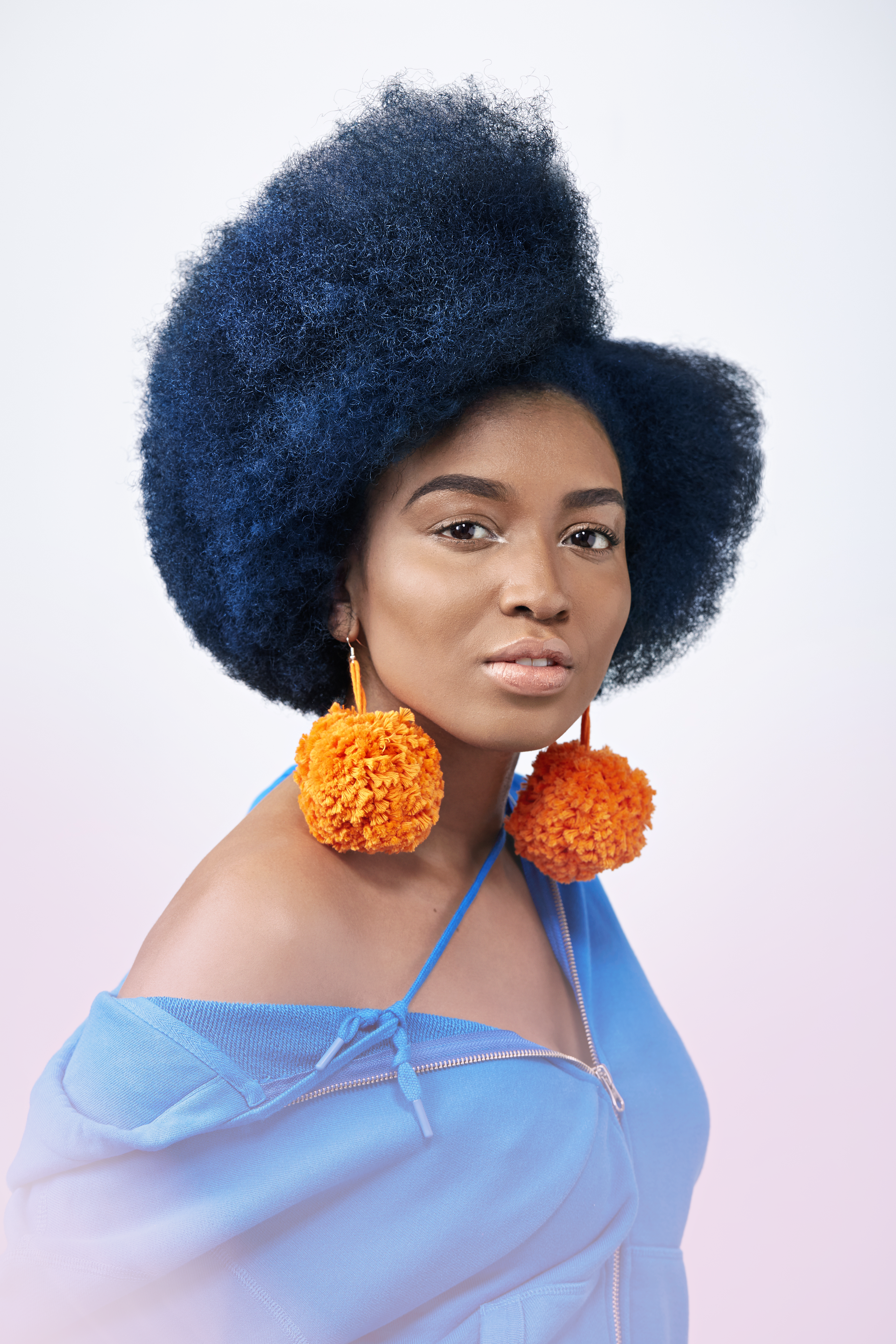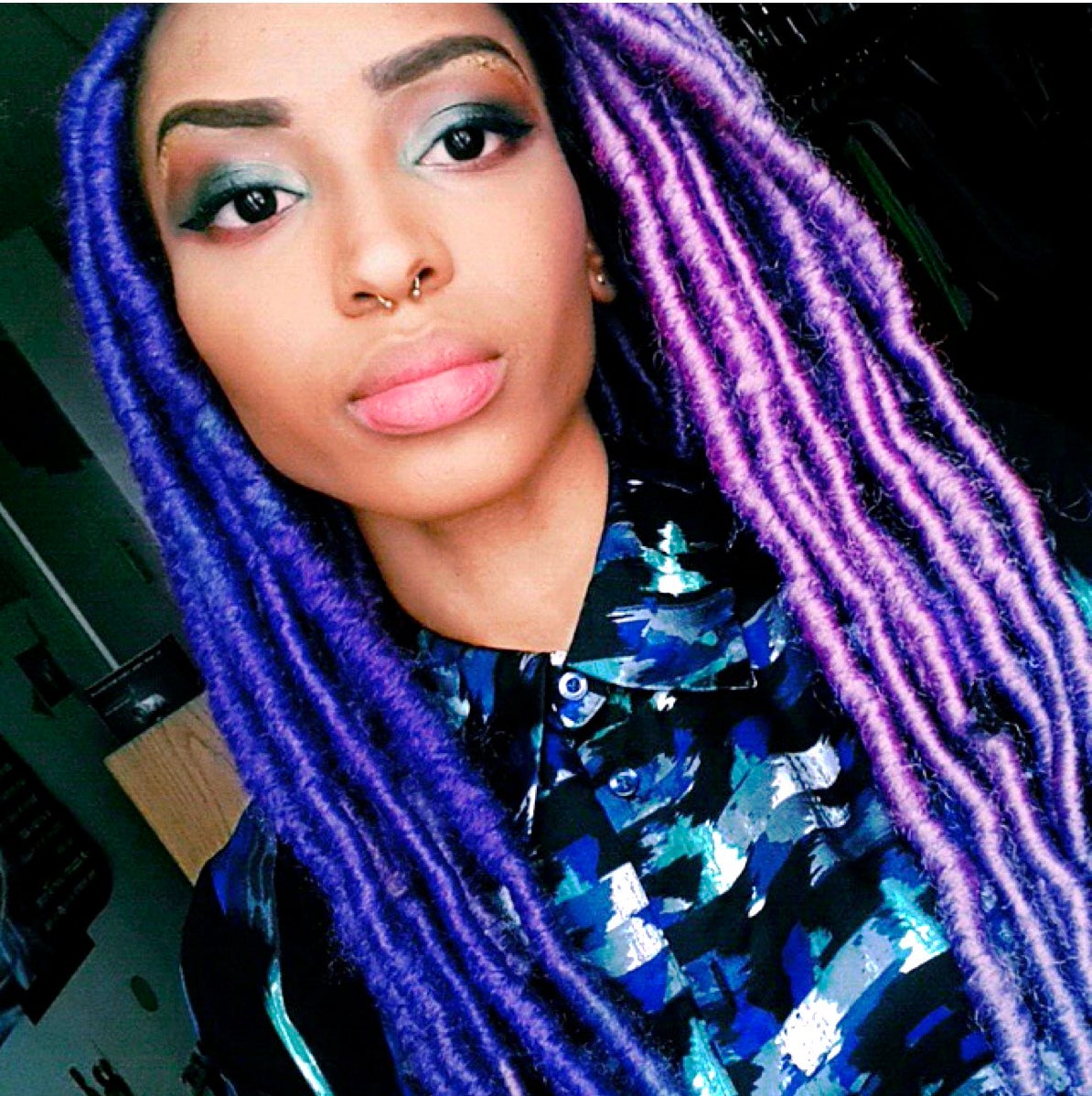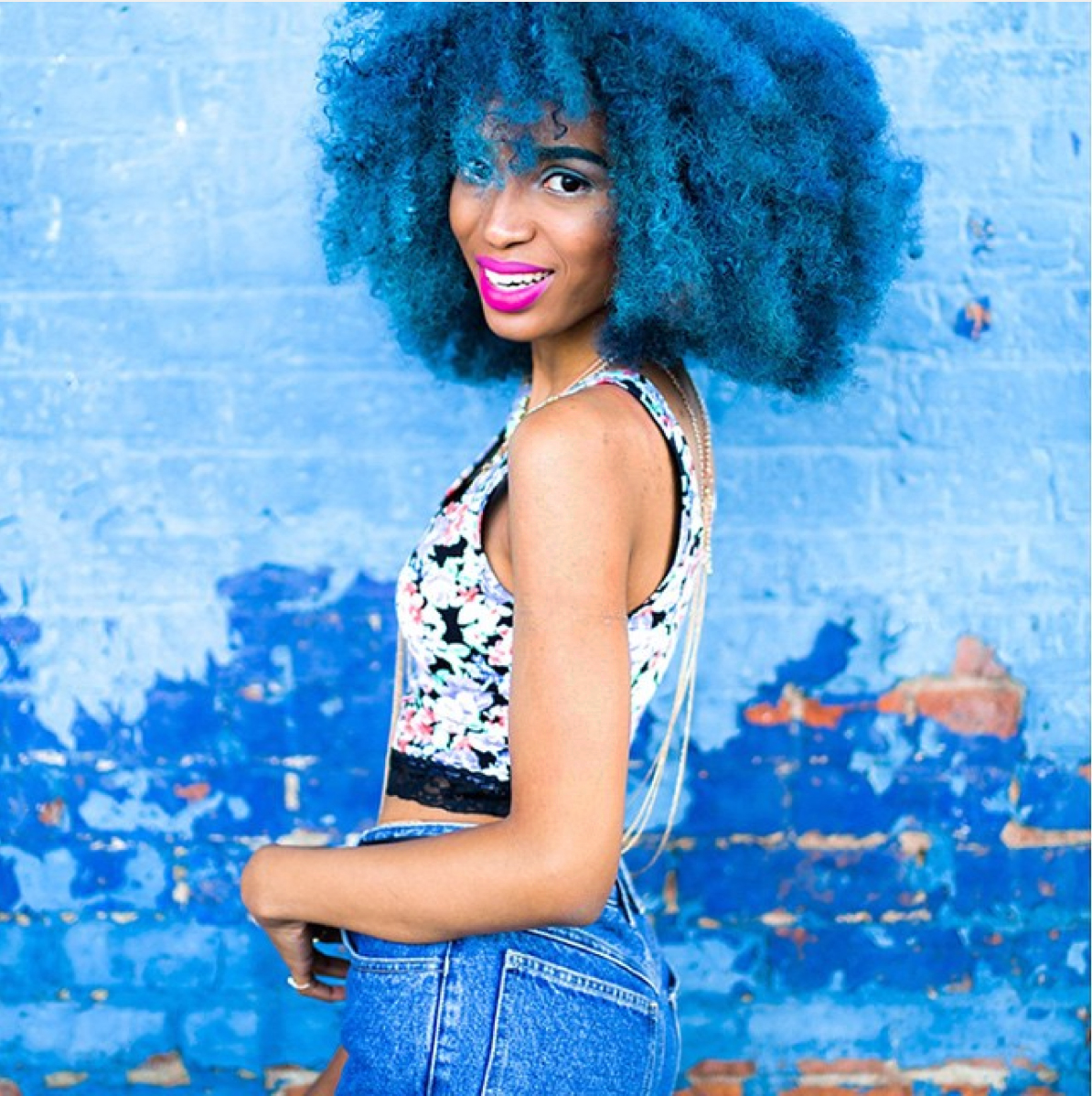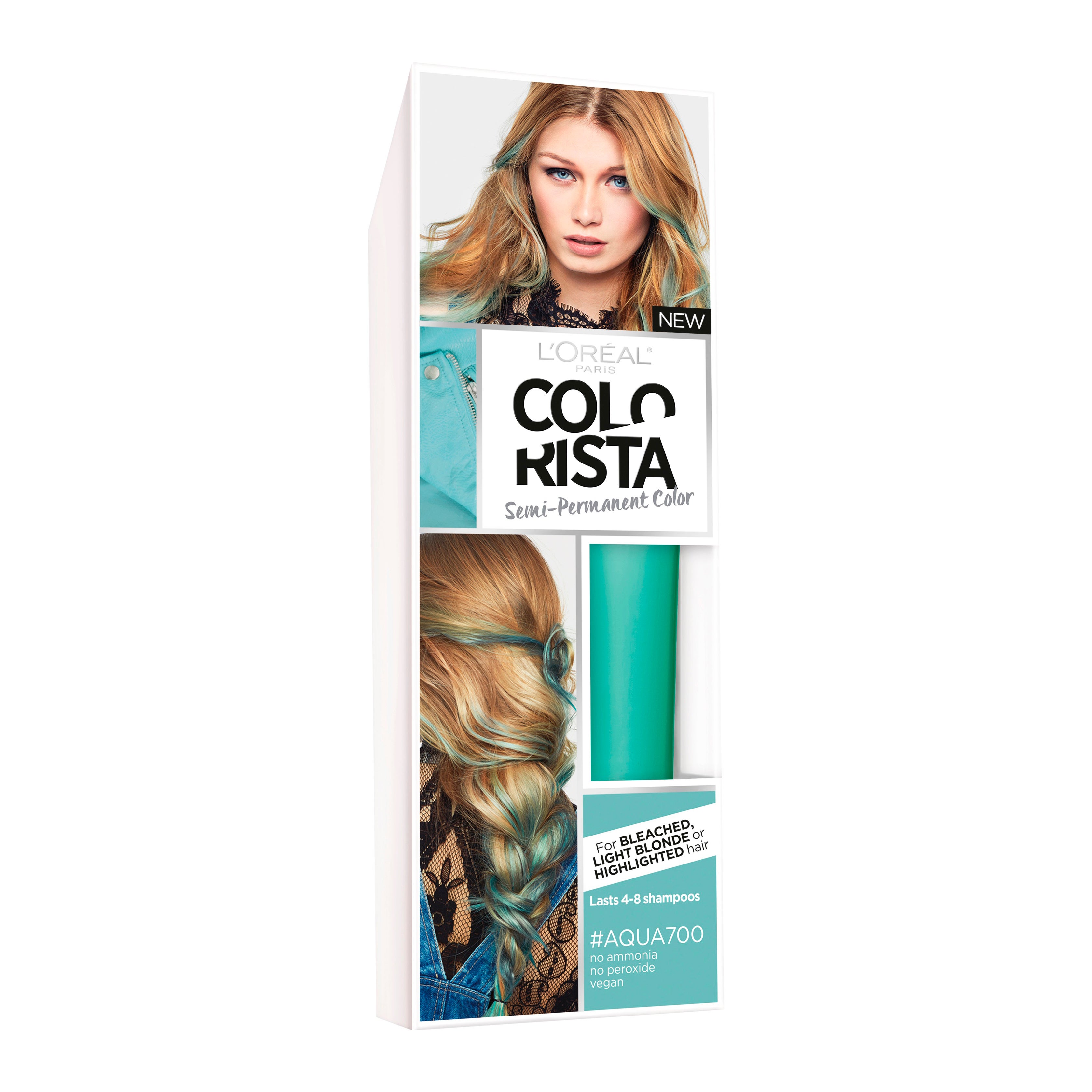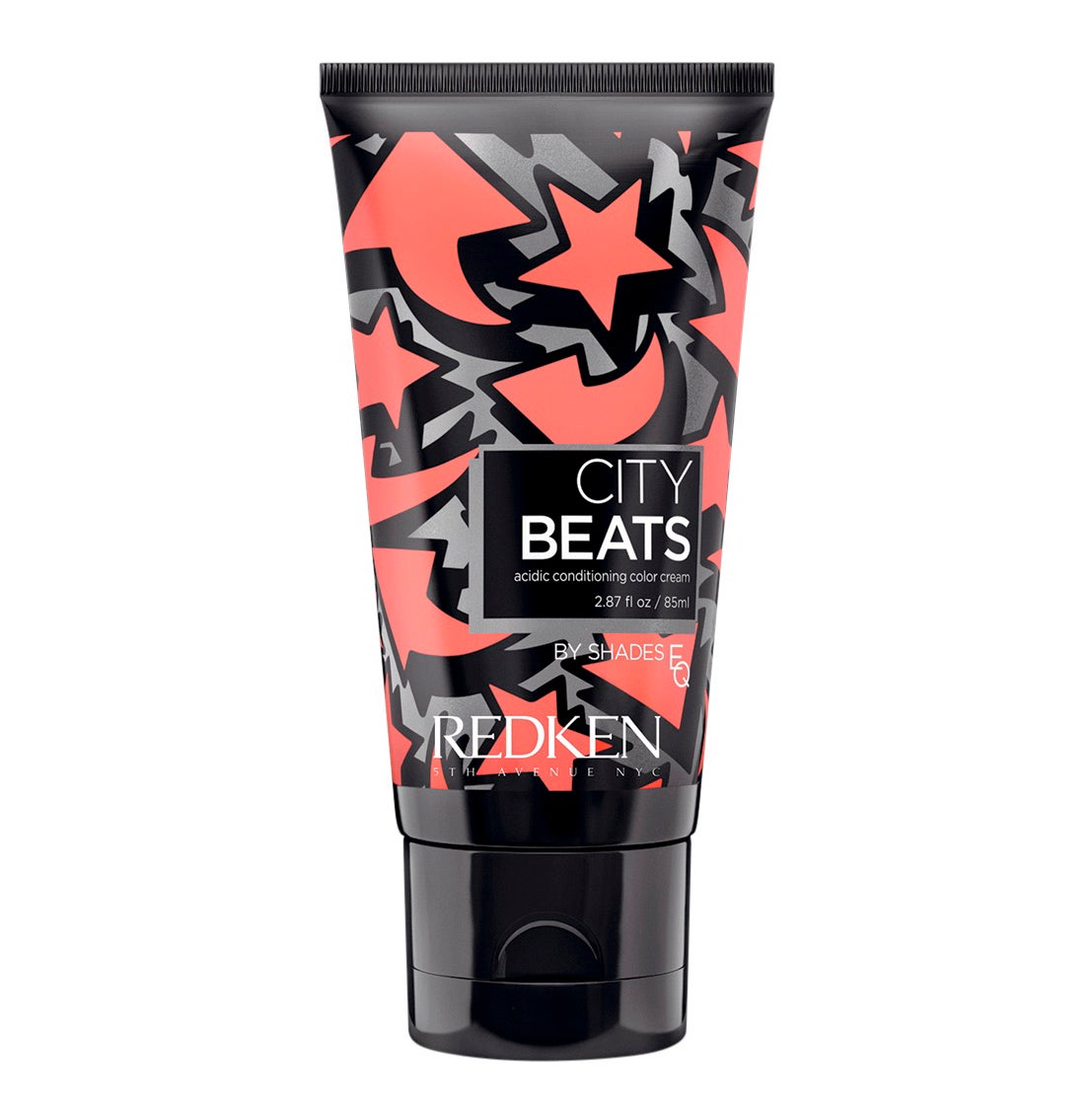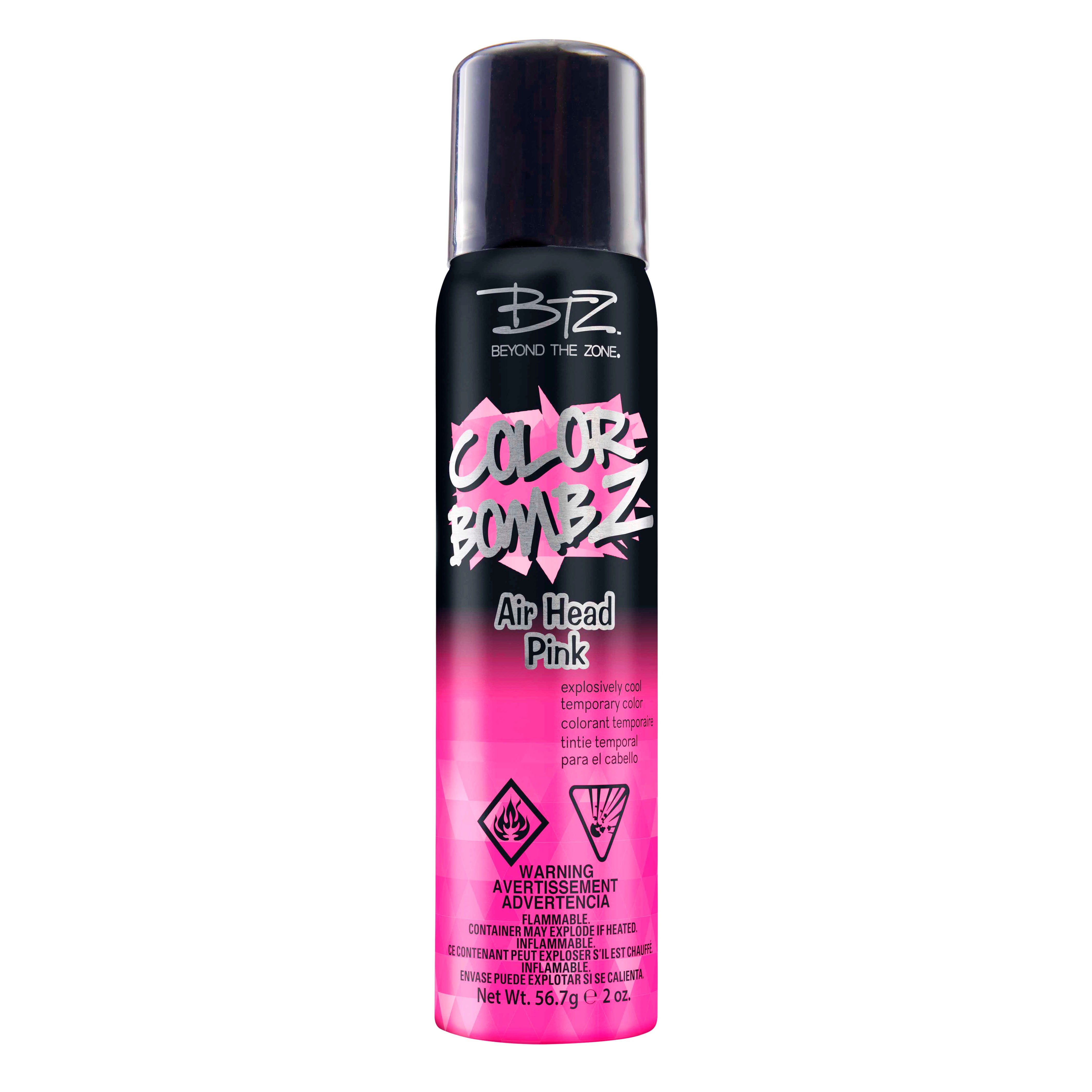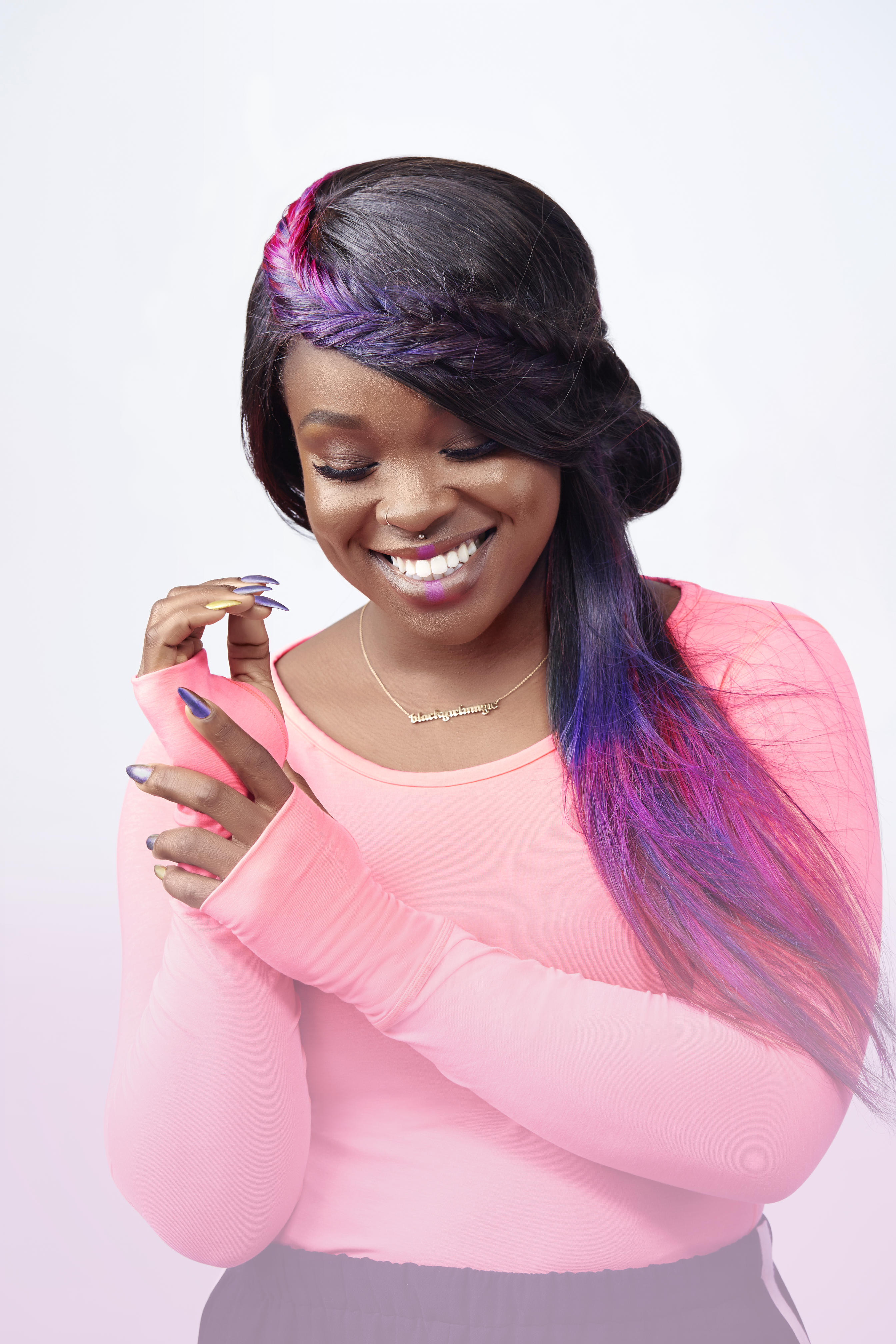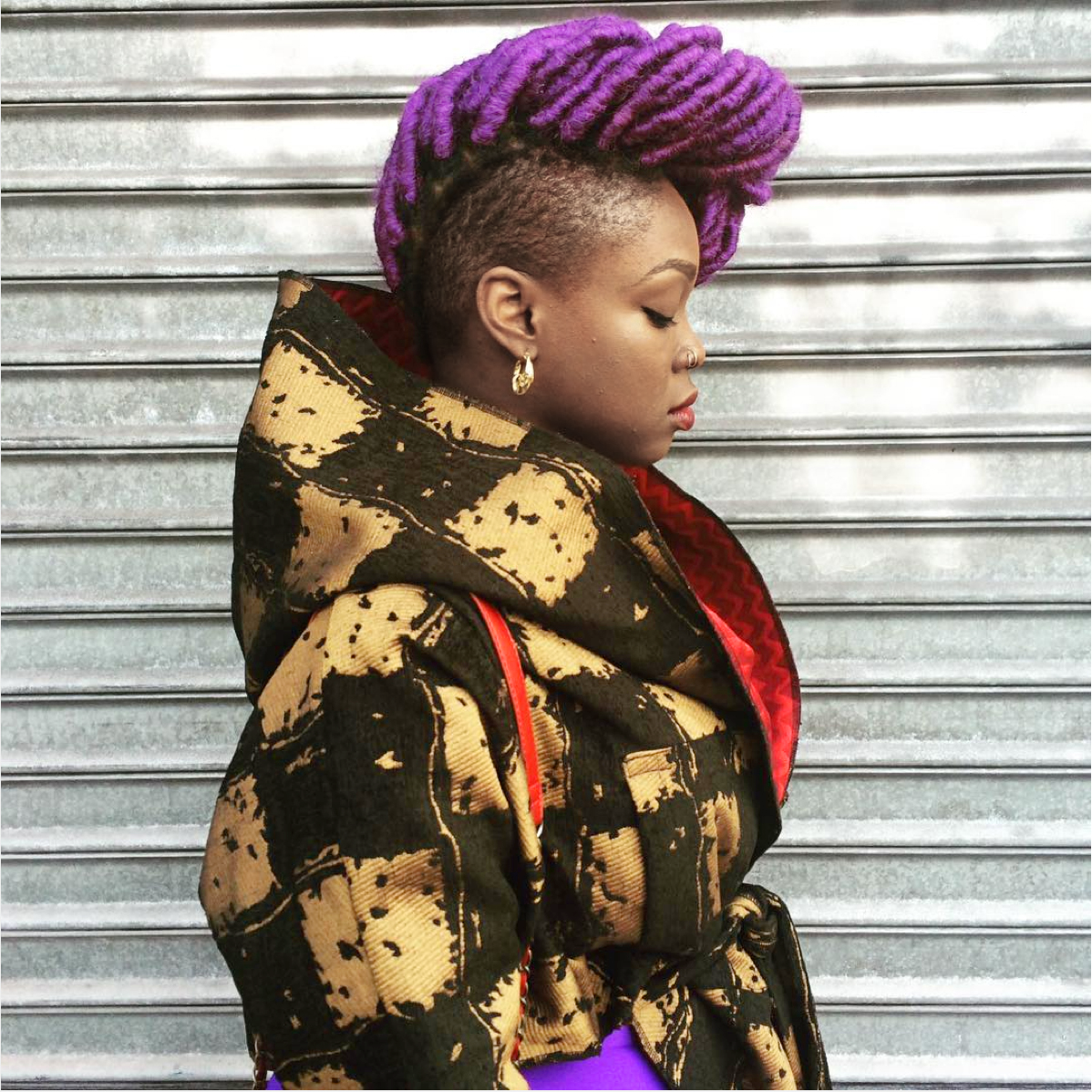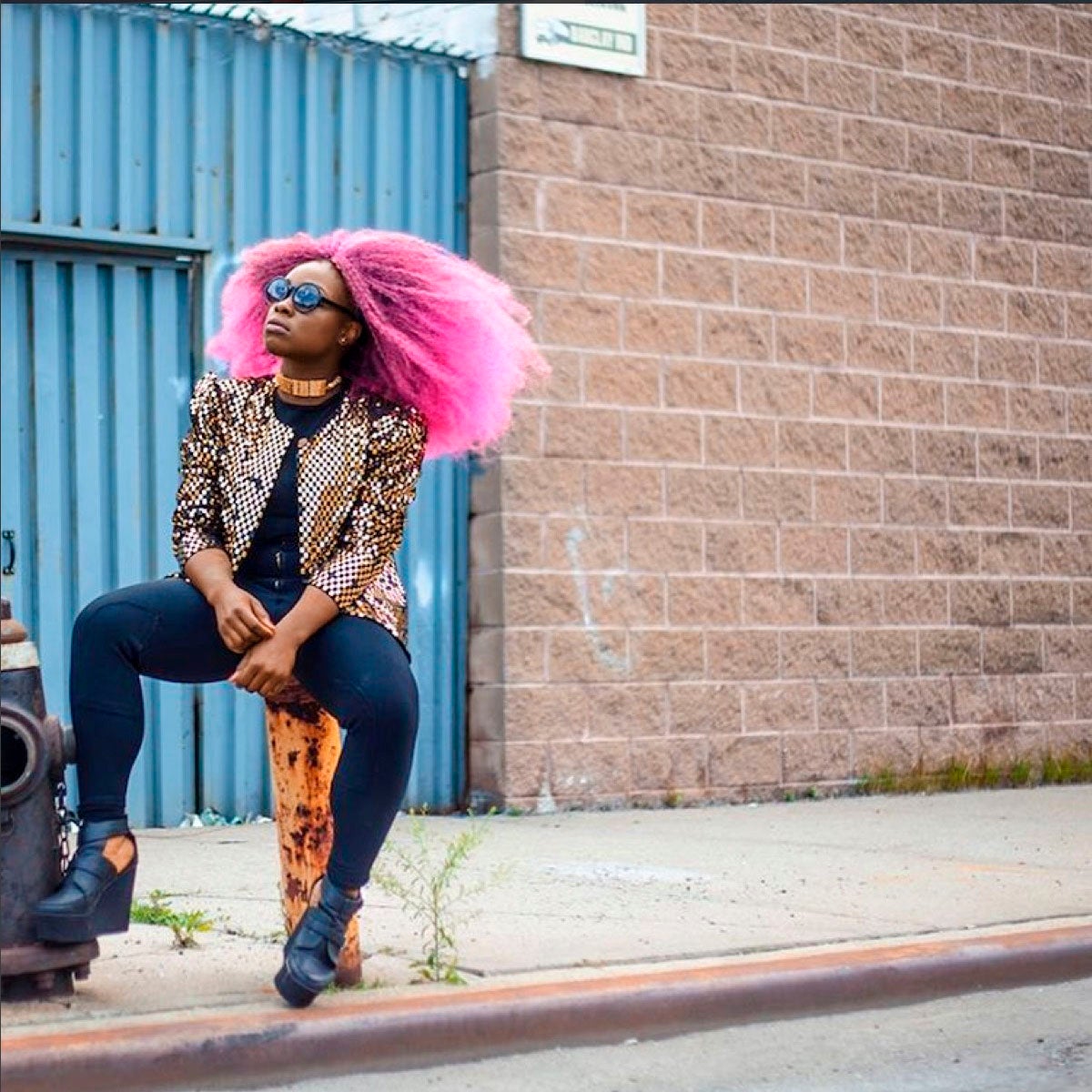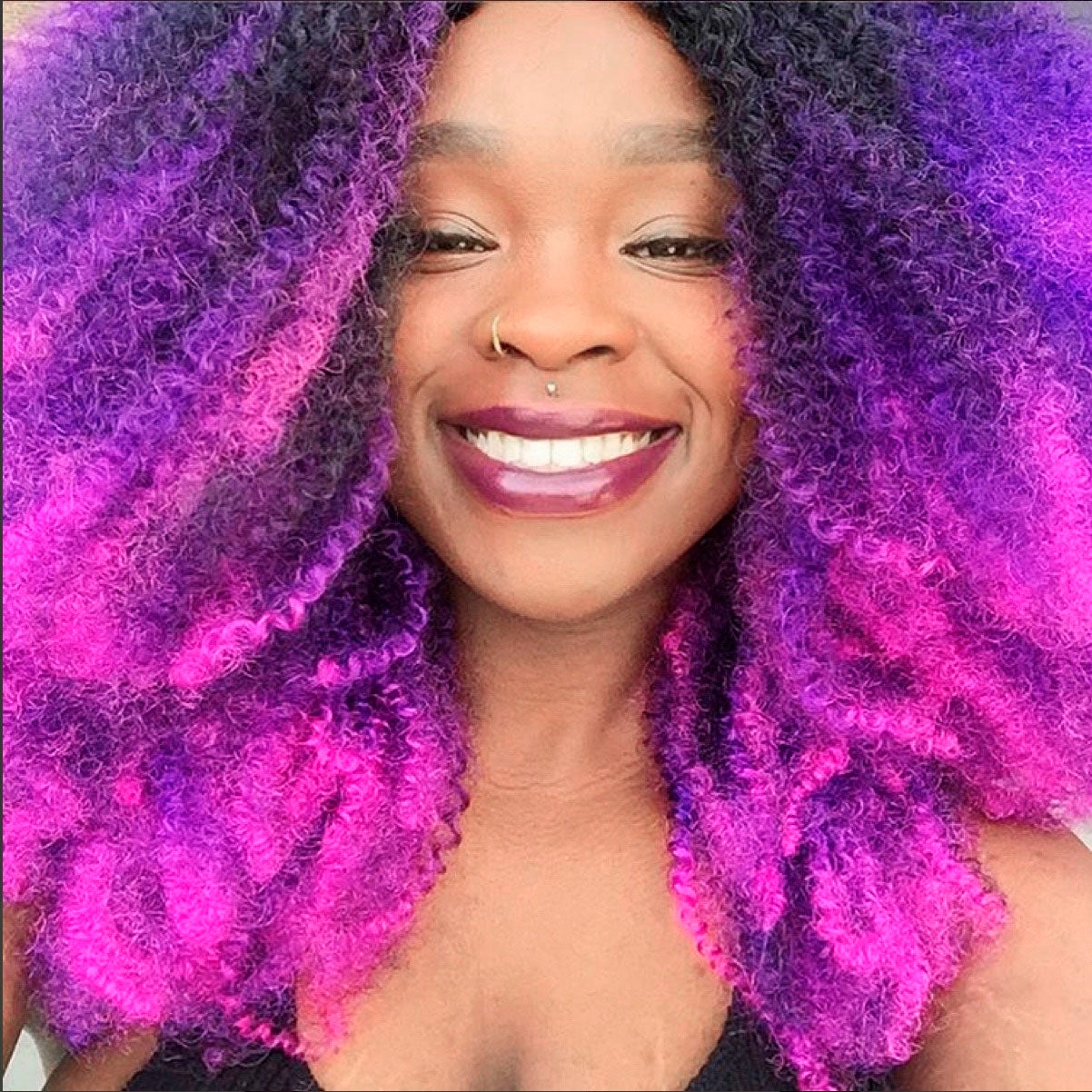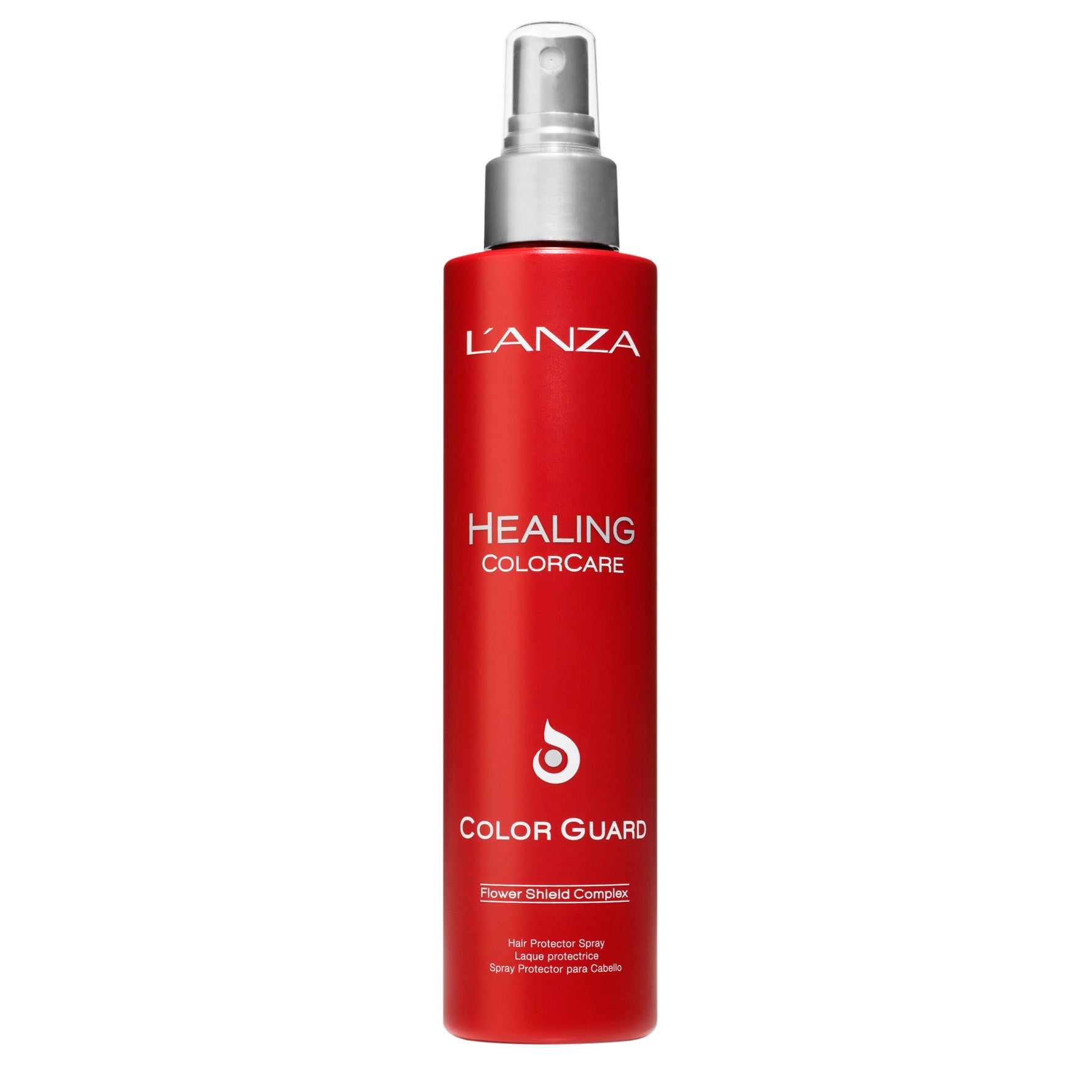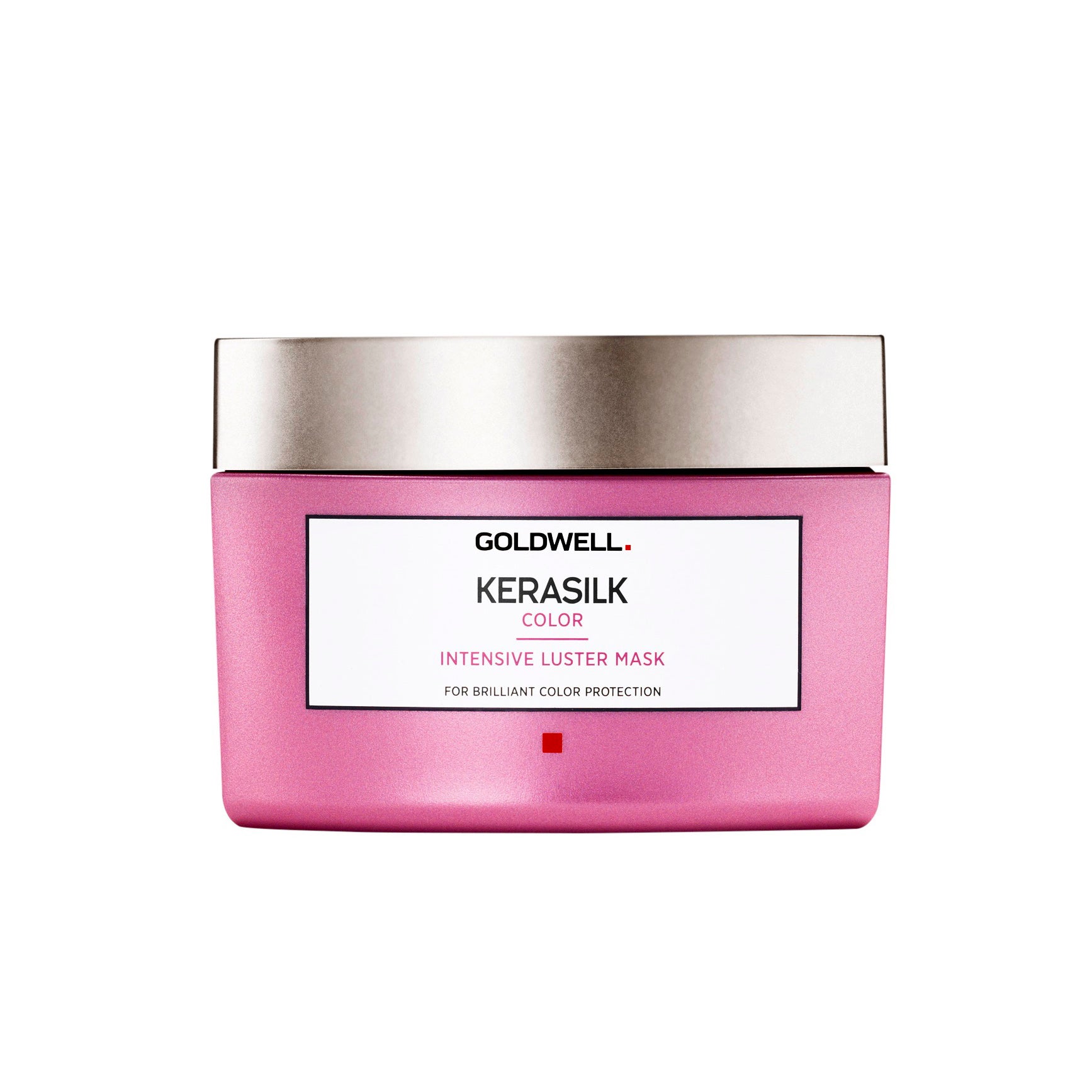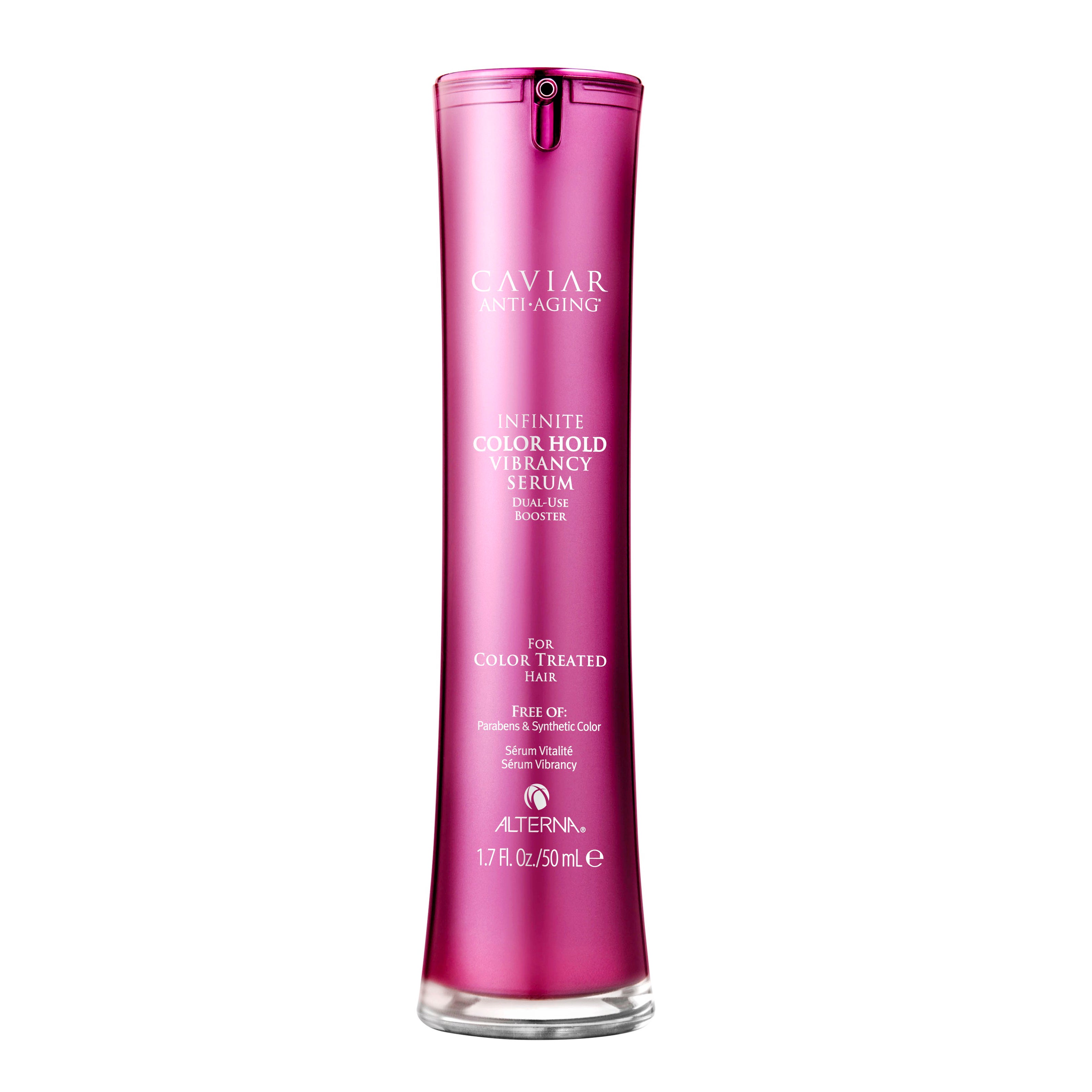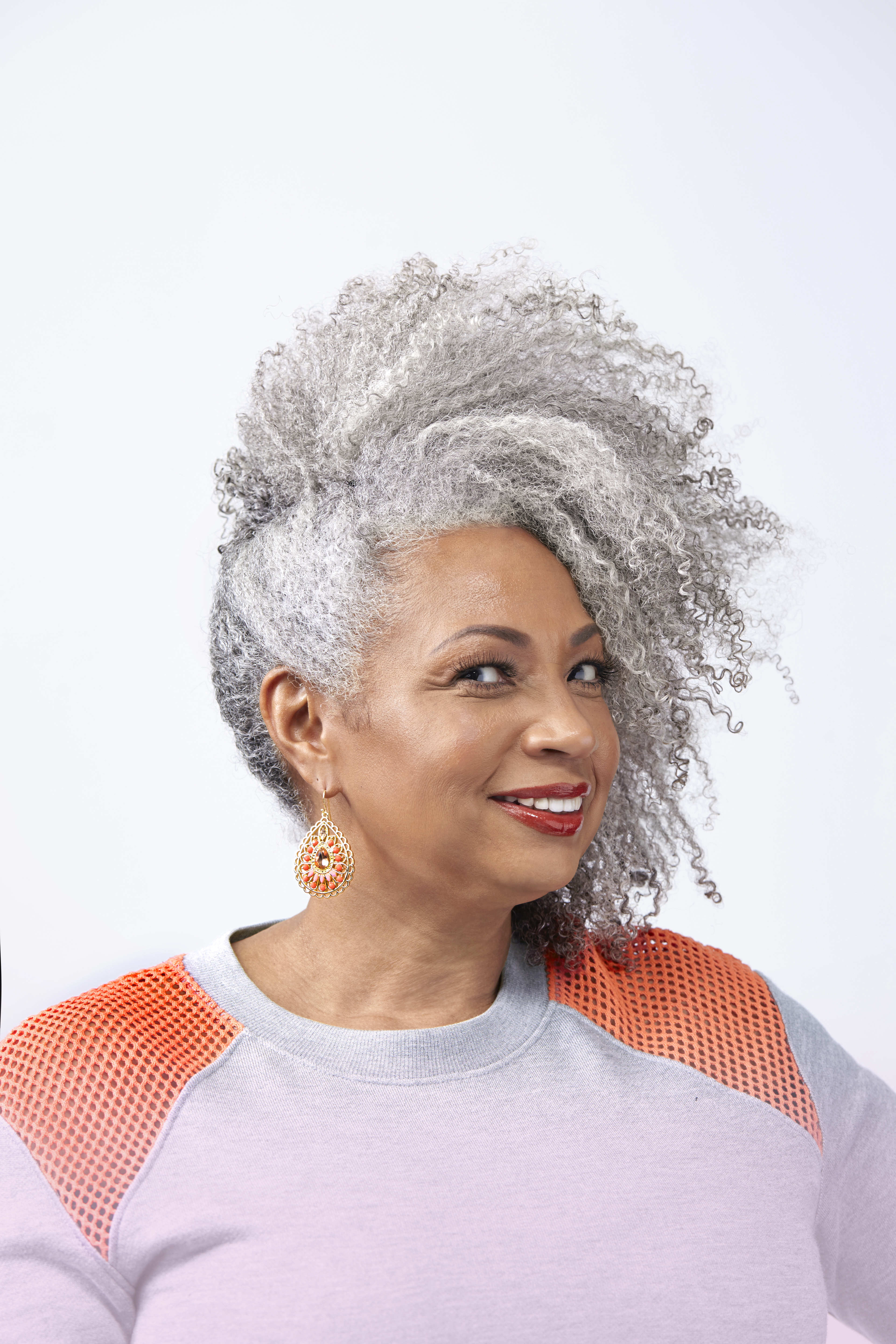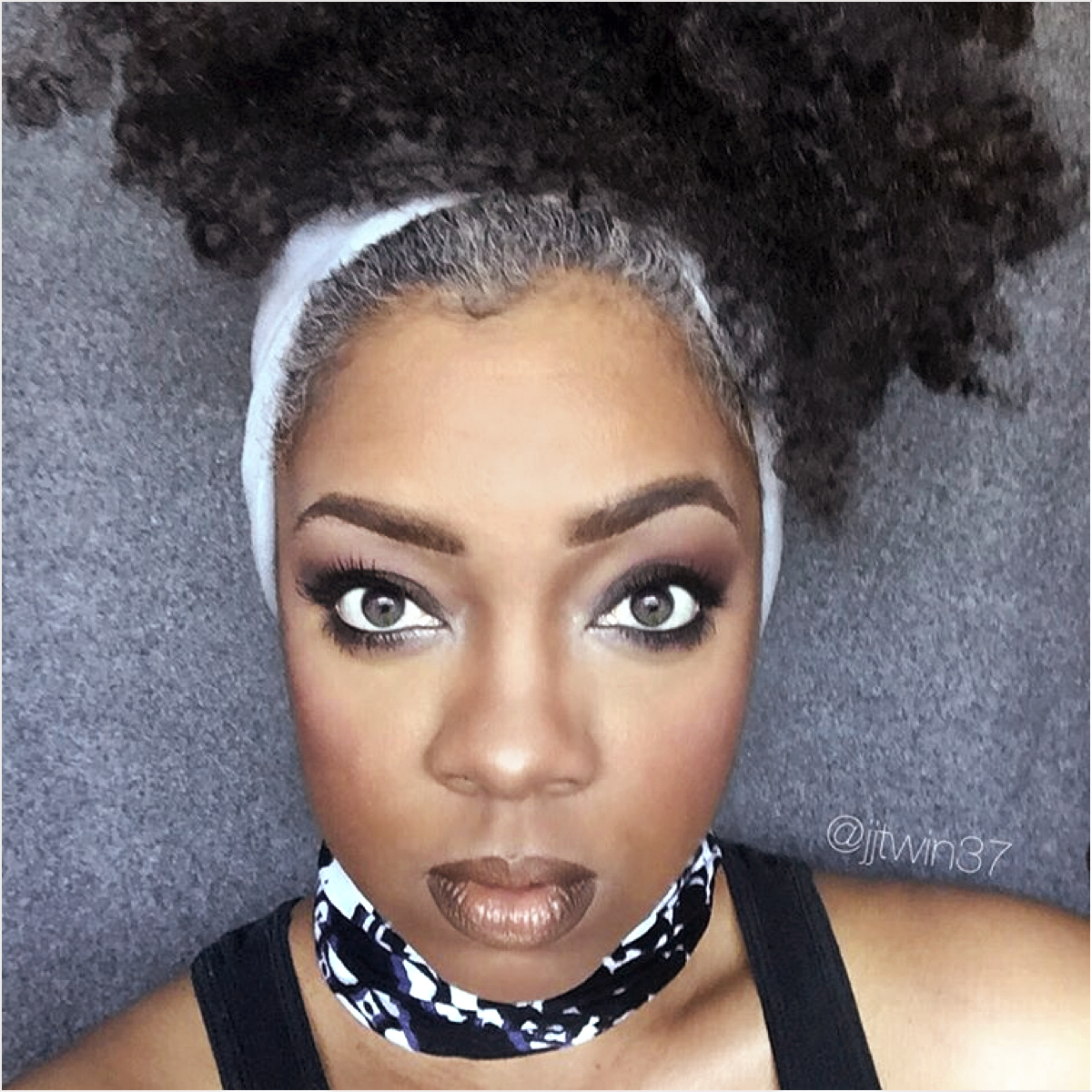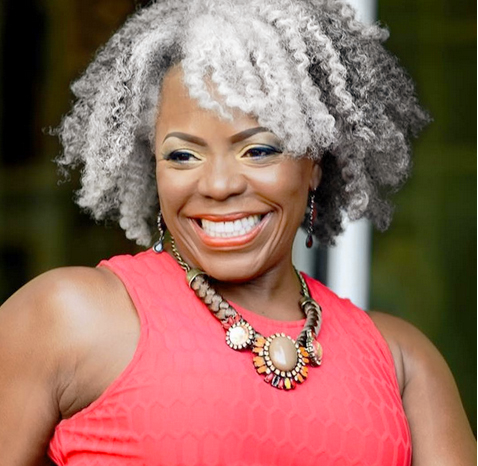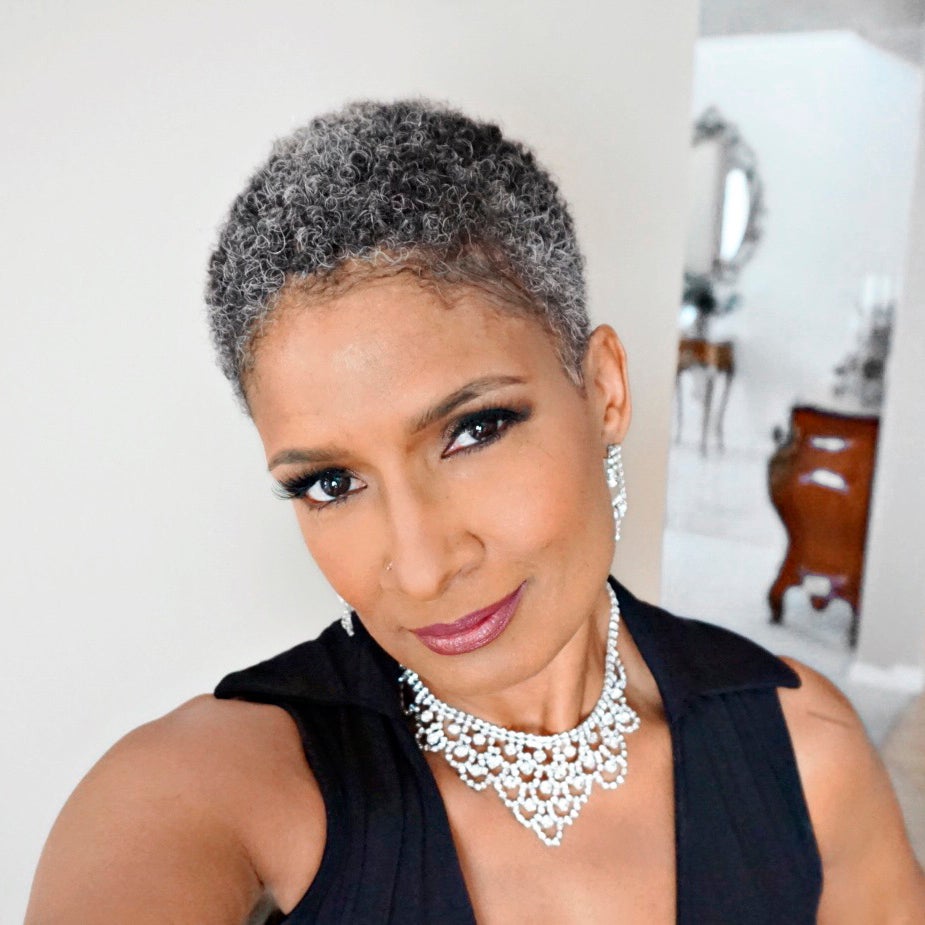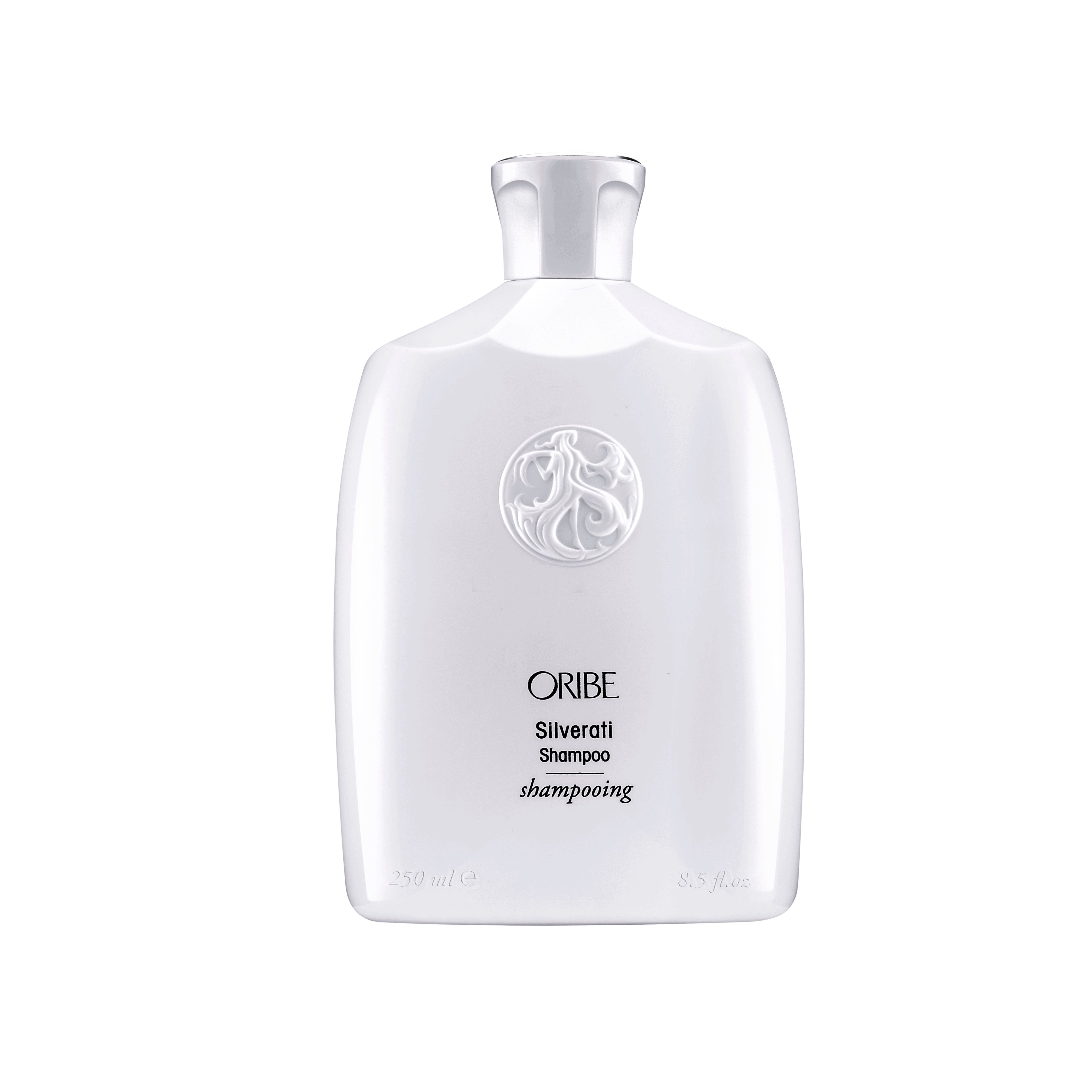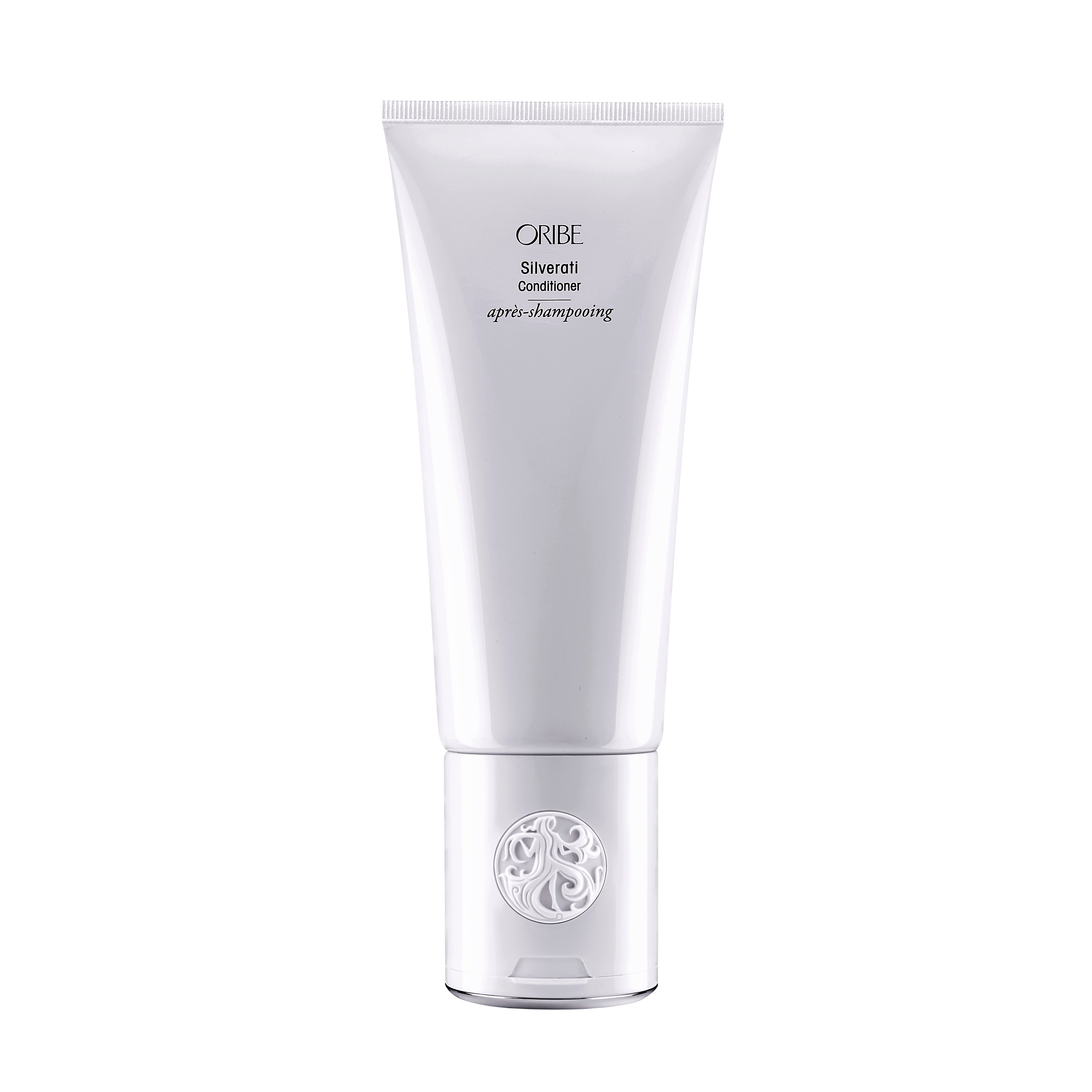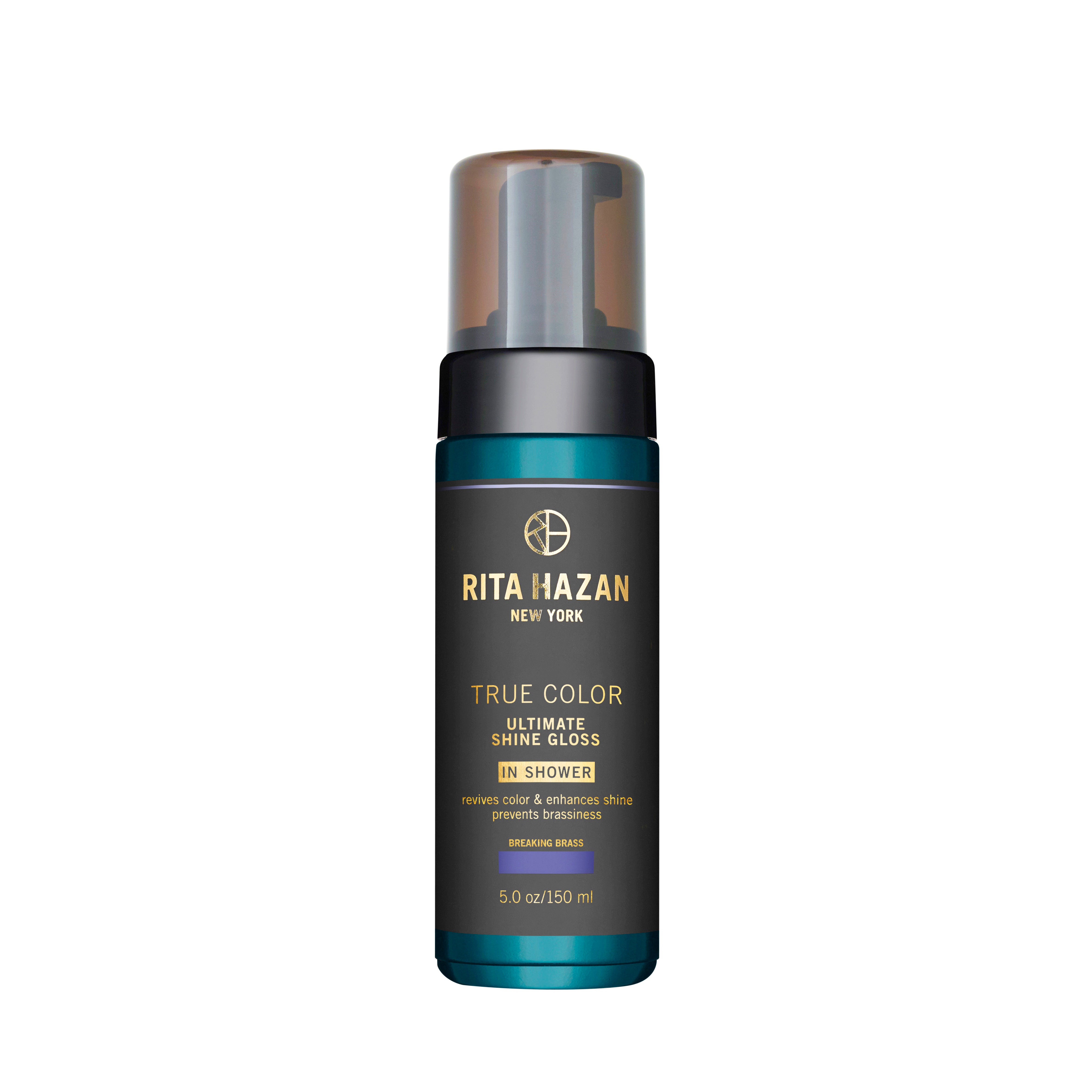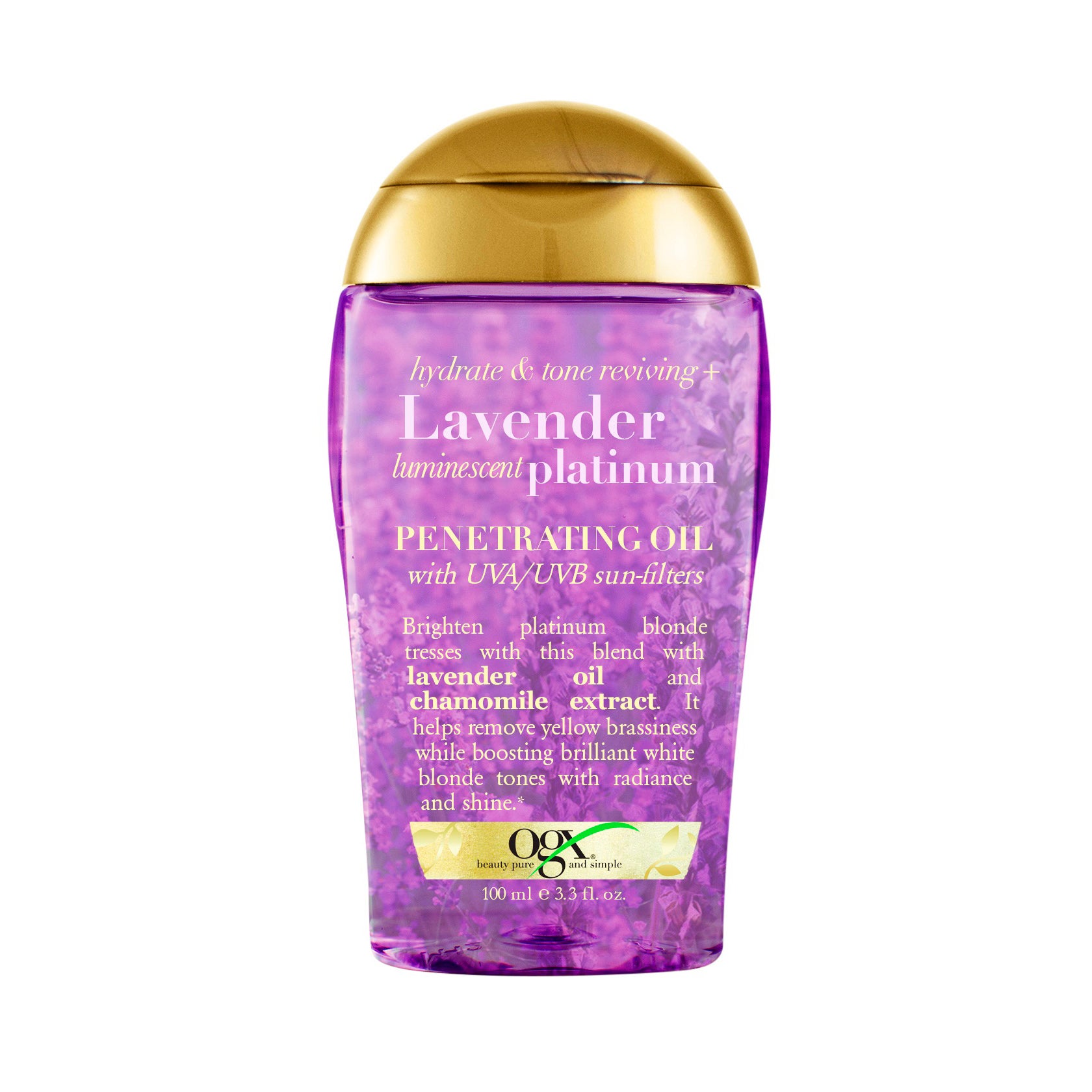Inspired by four color connoisseurs we spotted on Instagram, we asked three experts to give us real talk on how to safely try pastels, rainbow and gray strands.
This feature originally appeared in the April 2017 Issue of ESSENCE Magazine.
If you have even a slight color-commitment phobia, there are tons of temporary options that look just as cool. Our model Adliad Elaine Kwawu used a blue spray-on tint to give her dark fro a halo of cobalt. “Spray-on color, although it’s fun, can be a bit messy,” advises stylist and colorist Stacey Ciceron of New York City. So it’s best to create your style first and then apply the tint as an accent. Also allow the hair to dry before getting dressed or touching it.
Minimal heat is the ticket when it comes to working with color-treated strands. “Textured hair is naturally dry, and adding color definitely increases dryness,” says Ciceron. Use sulfate-free shampoos and conditioners designed for color-treated locks, and moisturize daily with a cocktail of water, oil and leave-in conditioner.
Routine conditioning sessions using unrefined coconut oil will help your hair stay hydrated. “Make sure you return to the salon regularly to receive other treatments to keep your hair healthy,” says Thompson. “And commit to a regimen, because colors like [these below] require more maintenance.”
It may be tempting to watch some YouTube vids and get to coloring, but to achieve the vibrancy and coolness of bright colors, your hair has to be lightened first. And lightening is not something that should ever be a DIY project. If you’re not ready to jump all the way into a shade on your own strands, dyeing a wig or extensions is an easy alternative. Just take the hair to your stylist and have it done professionally.
Your tresses should be thoroughly assessed before you seek to try permanent or semipermanent colors. “[They have] to be able to withstand such a lightening process,” says Thompson. The strength, porosity and elasticity of your strands will determine how much lightening can be done, if any at all.
Soft tones like pastels are a little more difficult to pull off, because your locks need to be lifted to the lightest blond (think platinum) for the color to show up. A safe bet for our hair: Look for a colorist who uses Olaplex or b3 Brazilian Bond Builder with her service. These products work as a barrier between the chemical and your mane to keep it strong throughout the dyeing process and to minimize breakage or other damage.
Intentional gray hair is having a major moment, but many women are simply embracing their naturally silver strands. Whether gray hair is real or faux, upkeep isn’t easy. Natural gray tends to be more coarse, but Ciceron says it tends to be stronger than other natural-hair textures. Experiencing breakage with your gray? It’s likely due to overprocessing or extreme dryness, which can affect anyone.
“The impact of environmental elements like pollution, sun and water can cause gray hair to turn yellowish,” says Rita Hazan, celebrity colorist and owner of the Rita Hazan Salon in New York City. Try a purple-tinted shampoo, specifically made for blond and gray, that cancels out any hue changes in your locks.
“Most people with darker hair never pay attention to the color of their gel or shampoo,” says Ciceron. But using something tinted can actually show up on platinum strands. “Gray hair picks up the slightest color. Like a piece of white fabric.” To keep silver strands bright, “use clear or white shampoo and conditioner,” says Ciceron.
A perk to rocking your silver tresses is, if you’re into experimenting with a bold new shade, you don’t have to bleach in advance. “Leave the dye on a little longer under heat,” says Hazan. The darker or more vivid the color, the easier it is to accept the pigment. But note that the color fades very quickly.
Fashion photographer Itaysha Jordan (@itayshaphoto) lives in Brooklyn. The 15-plus-year industry vet is committed to the growing movement of multiculturalism in the commercial art realm.

